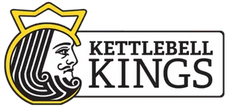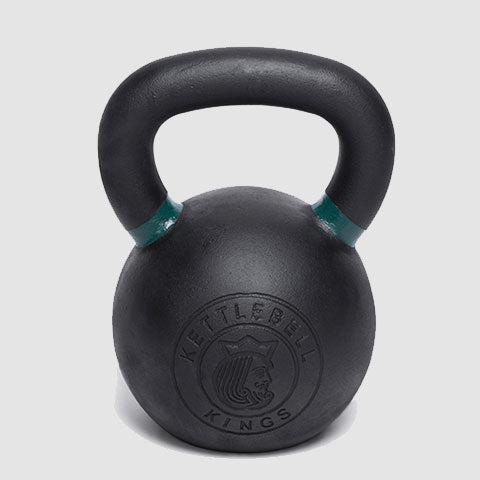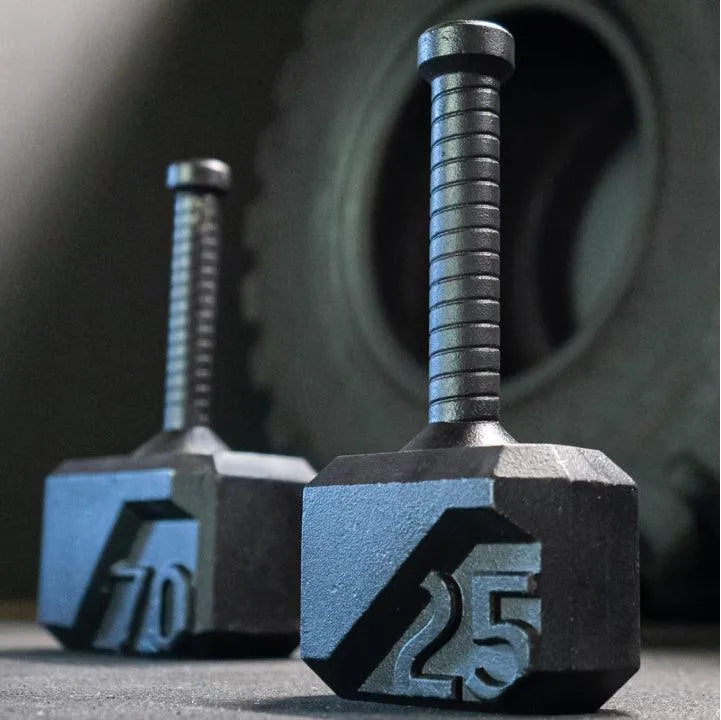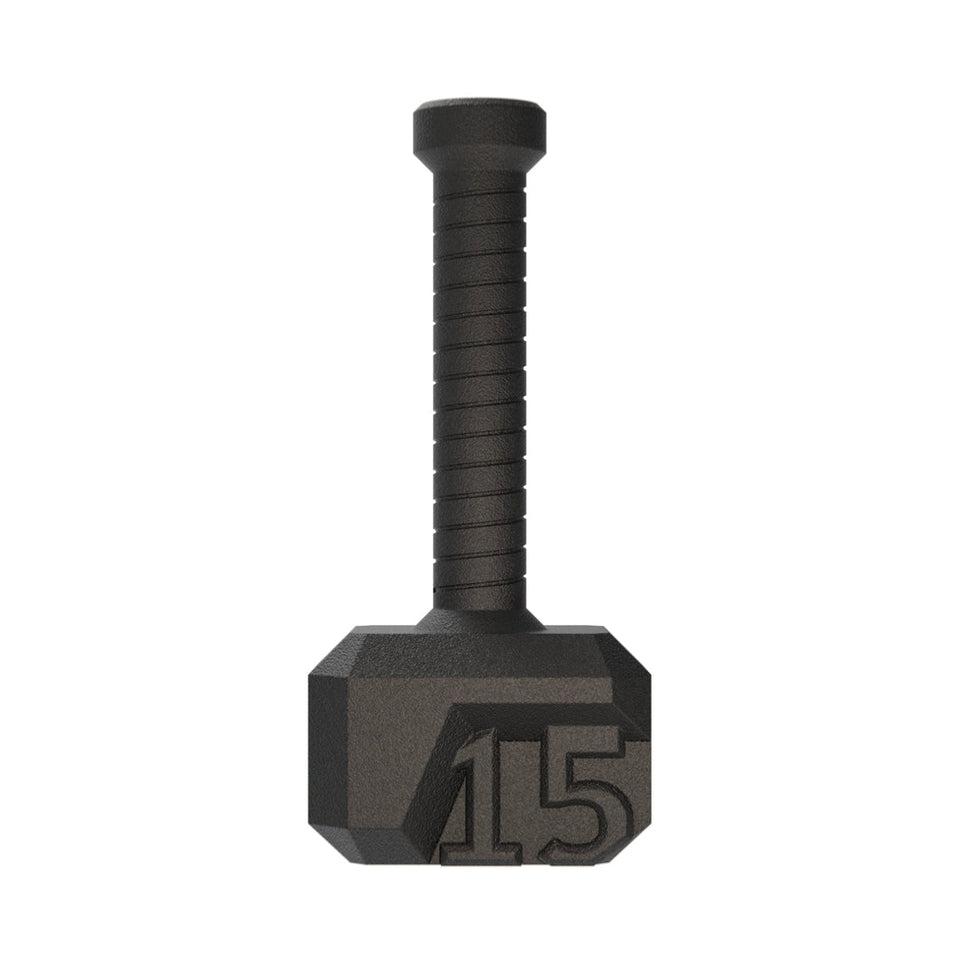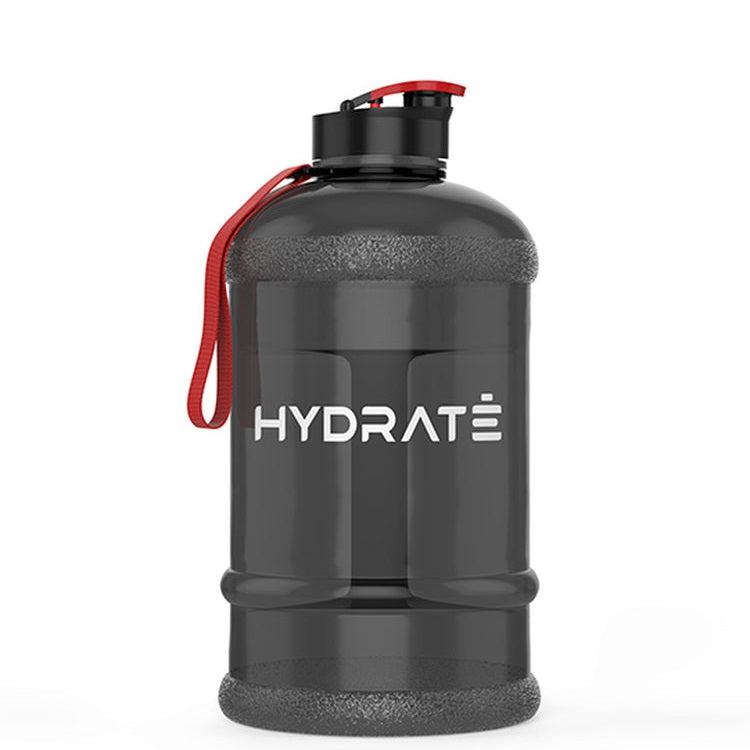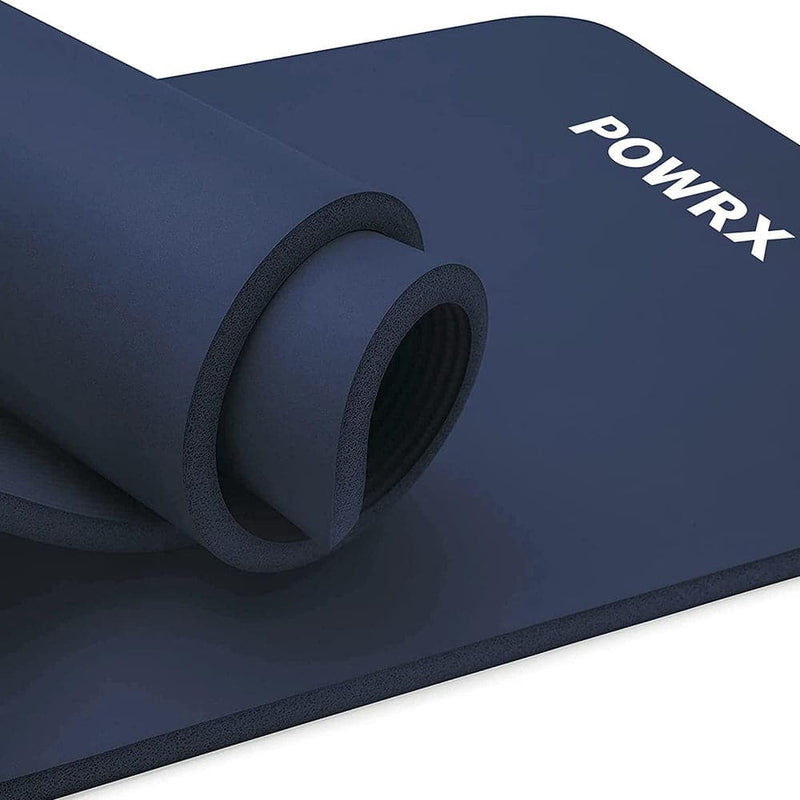Are you tired of spinning your wheels in the gym, wondering if you're using the right rep range to build muscle? Look no further! This comprehensive guide will demystify the relationship between rep ranges and muscle hypertrophy, helping you optimize your training for maximum muscle growth. Whether you're a beginner looking to start your muscle-building journey or an experienced lifter aiming to break through a plateau, this article will provide you with evidence-based insights and practical strategies to take your gains to the next level.
What is the ideal rep range for muscle hypertrophy?
For years, the fitness industry has promoted the idea of a "hypertrophy zone" - typically defined as 8-12 reps per set - as the optimal rep range for muscle growth. However, recent research has challenged this notion, suggesting that muscle hypertrophy can occur across a much wider spectrum of rep ranges.
Studies have shown that both low-rep, high-load training (e.g., 3-5 reps) and high-rep, low-load training (e.g., 20-30 reps) can produce similar increases in muscle mass when volume is equated. This finding has led researchers to conclude that total training volume (sets x reps x weight) may be more important for muscle growth than adhering to a specific rep range.
However, it's important to note that different rep ranges may have varying effects on other aspects of muscular development, such as strength gains and muscular endurance.
Understanding the relationship between rep ranges and muscle growth
To fully grasp the impact of rep ranges on muscle hypertrophy, we need to consider how different rep schemes affect muscle fiber recruitment and the physiological responses that drive muscle growth.
When you perform an exercise with heavy weights and low reps, you typically recruit more type II muscle fibers, which have the greatest potential for growth. These fast-twitch fibers are responsible for generating high levels of force but fatigue quickly. On the other hand, high-rep training with lighter weights tends to recruit more type I muscle fibers, which are more fatigue-resistant but have less growth potential.
Interestingly, research has shown that training to muscle failure can lead to similar levels of muscle fiber activation regardless of the weight used. This suggests that both high-rep and low-rep training can be effective for muscle hypertrophy when performed with sufficient intensity.
How do high reps vs. low reps impact muscle growth?
Both high-rep and low-rep training can contribute to muscle growth, but they may do so through slightly different mechanisms.
High-rep training (12+ reps) typically involves using lighter weights and can lead to:
- Increased metabolic stress
- Greater muscle pump (cell swelling)
- Improved muscular endurance
Low-rep training (1-6 reps) with heavier weights tends to result in:
- Greater mechanical tension
- Increased neural adaptations
- Larger strength gains
For optimal results, many experts recommend incorporating a variety of rep ranges in your training program. This approach, known as "rep range variety," allows you to stimulate muscle growth through multiple pathways and can help prevent plateaus.
What role does training volume play in hypertrophy?
Training volume is a crucial factor in muscle hypertrophy. It refers to the total amount of work performed during a workout or training cycle and is typically calculated as sets x reps x weight.
Research has consistently shown that higher training volumes tend to produce greater muscle growth, up to a certain point. However, the optimal volume can vary depending on factors such as training experience, recovery capacity, and individual genetics.
A meta-analysis by Schoenfeld et al. (2017) found that performing at least 10 sets per muscle group per week was associated with the greatest hypertrophy gains. However, some individuals may benefit from even higher volumes, while others may experience diminishing returns or even overtraining at very high volumes.
To manipulate training volume for maximum muscle growth, consider the following strategies:
- Gradually increase the number of sets per exercise or muscle group
- Add extra training sessions for lagging muscle groups
- Incorporate drop sets or other intensity techniques to increase volume within a single set
Remember that volume should be increased progressively over time to allow for proper recovery and adaptation.
Are there different optimal rep ranges for different muscle groups?
While the principles of muscle hypertrophy apply to all muscle groups, there may be some benefit to tailoring rep ranges based on muscle fiber composition and the specific functions of different muscles.
For example:
- Larger muscle groups like the quadriceps and latissimus dorsi, which have a higher proportion of type II fibers, may respond well to a mix of heavy, low-rep training and moderate-rep work.
- Smaller muscle groups like the deltoids and calves, which tend to have a higher proportion of type I fibers, may benefit from higher rep ranges and more frequent training.
Additionally, some lifters find that certain exercises feel more effective or comfortable when performed with specific rep ranges. For instance, many people prefer using higher reps for isolation exercises like bicep curls or lateral raises, while sticking to lower reps for compound movements like squats and deadlifts.
Ultimately, the best approach is to experiment with different rep ranges for various muscle groups and exercises to find what works best for your body and goals.
How does training to failure affect muscle hypertrophy?
Training to muscle failure, defined as the point at which you can no longer perform another repetition with proper form, has been a topic of debate in the fitness community for years.
Pros of training to failure:
- Ensures maximum muscle fiber recruitment
- Can lead to greater metabolic stress and muscle damage, potentially stimulating growth
- May improve mental toughness and push your limits
Cons of training to failure:
- Increased risk of injury, especially with heavy weights or complex exercises
- May lead to excessive fatigue and longer recovery times
- Can potentially interfere with proper technique and form
Research suggests that training to failure can be an effective tool for muscle hypertrophy, but it's not necessary to train to failure on every set or in every workout. A more balanced approach might involve incorporating failure training selectively, such as on the last set of an exercise or during certain phases of your training program.
For beginners, it's generally recommended to stay 1-2 reps away from failure to focus on proper form and technique. As you gain experience, you can experiment with incorporating more failure training into your hypertrophy program.
What other training variables influence muscle growth besides rep ranges?
While rep ranges are important, several other training variables play crucial roles in maximizing muscle hypertrophy:
- Rest periods: Shorter rest periods (30-90 seconds) can increase metabolic stress and hormonal responses, while longer rest periods (2-3 minutes) allow for greater force production and volume accumulation. Both approaches can be effective for muscle growth.
- Exercise selection: Compound exercises that engage multiple muscle groups (e.g., squats, bench presses) generally produce greater overall muscle growth compared to isolation exercises. However, a combination of both types can be beneficial for targeting specific muscle groups and achieving balanced development.
- Training frequency: Higher training frequencies (2-4 times per week per muscle group) have been shown to produce greater muscle growth compared to lower frequencies, likely due to more frequent protein synthesis stimulation.
- Range of motion: Using a full range of motion in your exercises can lead to greater muscle growth compared to partial reps, as it exposes muscle fibers to tension throughout their entire length.
- Tempo: Manipulating the speed of both the concentric (lifting) and eccentric (lowering) phases of an exercise can affect muscle growth. Slower eccentric tempos, in particular, have been associated with increased muscle damage and potentially greater hypertrophy.
How can beginners vs. advanced lifters optimize their rep ranges for hypertrophy?
Beginners and advanced lifters have different needs and capabilities when it comes to optimizing rep ranges for muscle hypertrophy.
For beginners:
- Focus on learning proper form and technique with moderate rep ranges (8-12 reps)
- Gradually increase training volume over time
- Incorporate a mix of compound and isolation exercises
- Stay 1-2 reps away from failure to minimize injury risk
- Aim for 2-3 full-body workouts per week or an upper/lower split
For advanced lifters:
- Utilize a wider variety of rep ranges (e.g., 3-5, 6-8, 10-15, 15-20) to target different aspects of muscle growth
- Incorporate advanced resistance training techniques such as drop sets, rest-pause sets, or cluster sets
- Experiment with higher training frequencies (3-6 times per week per muscle group)
- Implement periodization strategies to manage fatigue and promote long-term progress
- Consider specialization phases for lagging muscle groups
Both beginners and advanced lifters can benefit from periodization strategies, which involve systematically varying training variables over time. Some popular periodization models for hypertrophy include:
- Linear periodization: Gradually decreasing rep ranges and increasing weight over several weeks or months
- Undulating periodization: Varying rep ranges and intensities from workout to workout or week to week
- Block periodization: Focusing on specific training goals (e.g., strength, hypertrophy, endurance) in 4-6 week blocks
Summary: Key Points to Remember for Optimizing Rep Ranges and Muscle Hypertrophy
- There is no single "best" rep range for muscle hypertrophy; growth can occur across a wide spectrum of rep ranges.
- Total training volume is a crucial factor in muscle growth, often more important than specific rep ranges.
- Incorporate a variety of rep ranges in your training program to stimulate multiple pathways for muscle growth.
- Tailor rep ranges to individual preferences, exercise types, and muscle group characteristics.
- Training to failure can be an effective tool for hypertrophy but should be used judiciously.
- Consider other training variables such as rest periods, exercise selection, and training frequency when designing your hypertrophy program.
- Beginners should focus on proper form and gradual progression, while advanced lifters can experiment with more advanced techniques and higher training volumes.
- Implement periodization strategies to manage fatigue and promote long-term muscle growth.
- Listen to your body and adjust your training approach based on individual response and recovery capacity.
By understanding the nuances of rep ranges and their impact on muscle hypertrophy, you can design a more effective and personalized training program to maximize your muscle growth potential. Remember that consistency, progressive overload, and proper nutrition are key factors in achieving your muscle-building goals.
Conclusion
In conclusion, understanding the relationship between rep ranges and muscle hypertrophy is crucial for optimizing your workouts and achieving your muscle-building goals. While there is no one-size-fits-all approach, incorporating a variety of rep ranges into your training routine can help target different muscle fibers and stimulate growth through multiple pathways. Remember that total training volume, intensity, and proper technique are just as important as rep range. By carefully adjusting these variables and listening to your body, you can create a personalized workout plan that maximizes muscle growth, strength gains, and long-term progress. Consistency, dedication, and smart programming will ultimately lead you to the results you're striving for.
References
- Schoenfeld, B. J., Grgic, J., Ogborn, D., & Krieger, J. W. (2017). Strength and hypertrophy adaptations between low- vs. high-load resistance training: a systematic review and meta-analysis. Journal of Strength and Conditioning Research, 31(12), 3508-3523. https://pubmed.ncbi.nlm.nih.gov/28834797/
- , N. A., West, D. W., Staples, A. W., Atherton, P. J., Baker, J. M., Moore, D. R., ... & Phillips, S. M. (2010). Low-load high volume resistance exercise stimulates muscle protein synthesis more than high-load low volume resistance exercise in young men. PloS one, 5(8), e12033. https://journals.plos.org/plosone/article?id=10.1371/journal.pone.0012033
- Grgic, J., Schoenfeld, B. J., Davies, T. B., Lazinica, B., Krieger, J. W., & Pedisic, Z. (2018). Effect of resistance training frequency on gains in muscular strength: A systematic review and meta-analysis. Sports Medicine, 48(5), 1207-1220. https://pubmed.ncbi.nlm.nih.gov/29470825/
- Schoenfeld, B. J., Ogborn, D., & Krieger, J. W. (2017). Dose-response relationship between weekly resistance training volume and increases in muscle mass: A systematic review and meta-analysis. Journal of Sports Sciences, 35(11), 1073-1082. https://pubmed.ncbi.nlm.nih.gov/27433992/
- Krzysztofik, M., Wilk, M., Wojdała, G., & Gołaś, A. (2019). Maximizing muscle hypertrophy: A systematic review of advanced resistance training techniques and methods. International Journal of Environmental Research and Public Health, 16(24), 4897. https://www.mdpi.com/1660-4601/16/24/4897
- Helms, E. R., Cronin, J., Storey, A., & Zourdos, M. C. (2016). Application of the repetitions in reserve-based rating of perceived exertion scale for resistance training. Strength and Conditioning Journal, 38(4), 42-49. https://journals.lww.com/nscascj/Fulltext/2016/08000/Application_of_the_Repetitions_in_Reserve_Based.5.aspx
- Schoenfeld, B. J., Peterson, M. D., Ogborn, D., Contreras, B., & Sonmez, G. T. (2015). Effects of low- vs. high-load resistance training on muscle strength and hypertrophy in well-trained men. Journal of Strength and Conditioning Research, 29(10), 2954-2963. https://pubmed.ncbi.nlm.nih.gov/25853914/
- Lasevicius, T., Ugrinowitsch, C., Schoenfeld, B. J., Roschel, H., Tavares, L. D., De Souza, E. O., ... & Tricoli, V. (2018). Effects of different intensities of resistance training with equated volume load on muscle strength and hypertrophy. European Journal of Sport Science, 18(6), 772-780. https://pubmed.ncbi.nlm.nih.gov/29564973/
- Gentil, P., Fisher, J., & Steele, J. (2017). A review of the acute effects and long-term adaptations of single-and multi-joint exercises during resistance training. Sports Medicine, 47(5), 843-855. https://pubmed.ncbi.nlm.nih.gov/27677917/
10. Schoenfeld, B. J., & Grgic, J. (2020). Effects of range of motion on muscle development during resistance training interventions: A systematic review. SAGE Open Medicine, 8, 2050312120901559. https://journals.sagepub.com/doi/full/10.1177/2050312120901559
